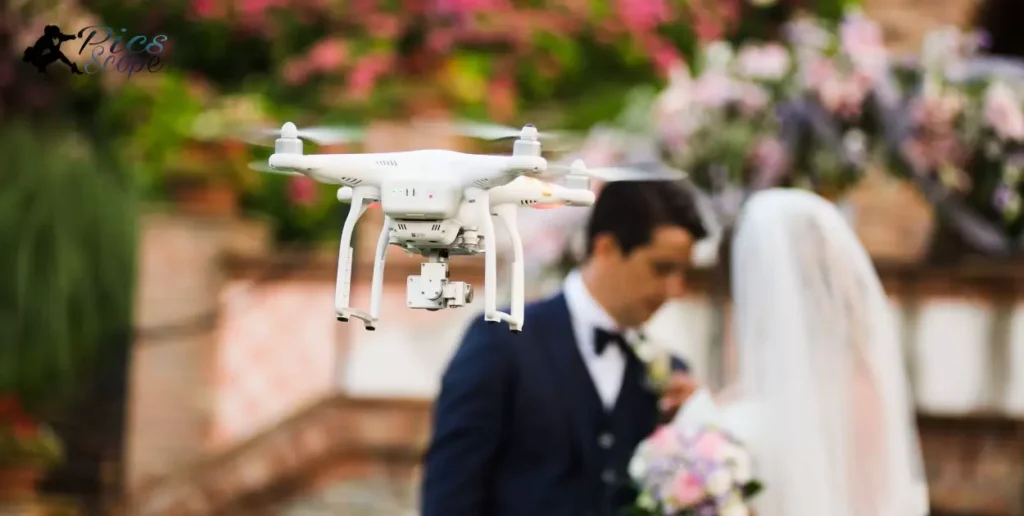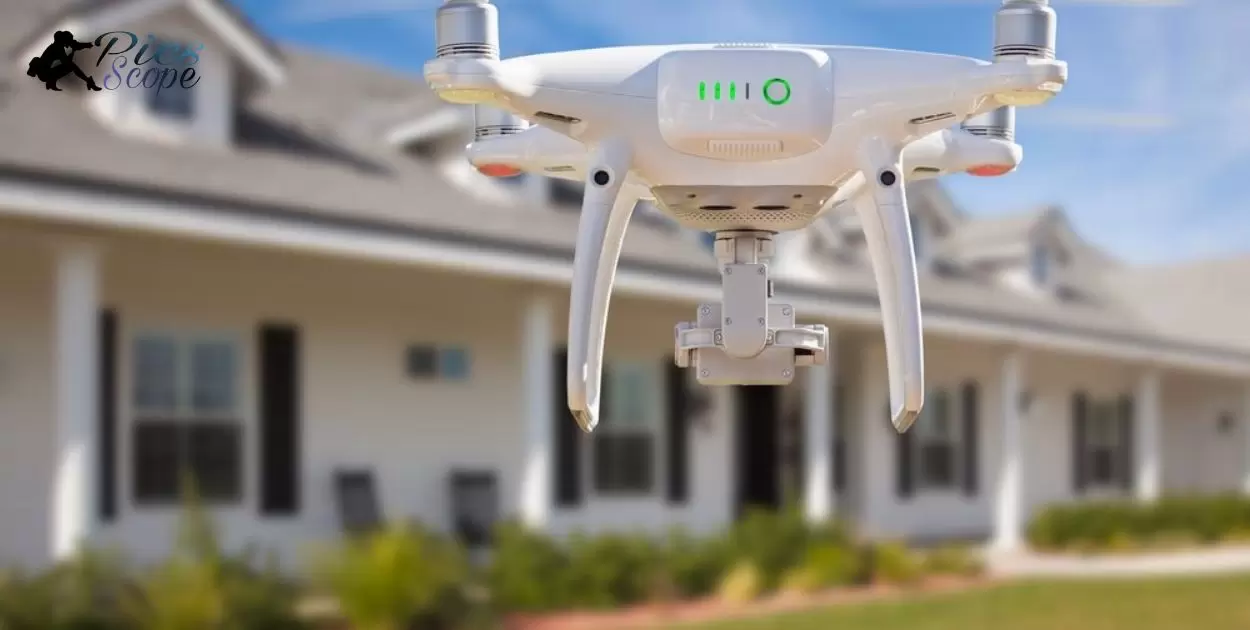Drone real estate photography involves capturing aerial images and videos of properties using unmanned aerial vehicles (drones). It offers stunning perspectives, showcasing a property’s landscape, size, and features from unique angles, enhancing marketing materials and providing potential buyers with a comprehensive view.
Curious about maximizing your earnings in real estate photography? Discover the art of pricing with precision. Learn how much to charge for drone real estate photography and unlock the key to setting competitive rates that elevate your business. Take the guesswork out of pricing and watch your profits soar as you master this crucial aspect of the industry.
Determining the cost for drone real estate photography involves various factors like location, property size, and project complexity. Professionals often consider hourly rates, package deals, or per-image pricing, typically ranging from $200 to $500 per session, ensuring fair compensation for high-quality aerial imagery.
How Much Do Drone Real Estate Photographers Make
Drone real estate photographers earn varying incomes based on factors like location and experience. In bustling urban areas, skilled photographers can make upwards of $50,000 annually. Beginners in smaller markets might start around $25,000, with the potential for growth as they gain expertise and build a client base.
Success in this field often hinges on marketing skills and the ability to showcase high-quality work. Proactive networking and leveraging social media can contribute to increased demand for services, ultimately impacting a drone real estate photographer’s earning potential.
Factors Influencing Drone Photography Pricing
Drone photography pricing is determined by various factors. Firstly, the location plays a crucial role, with urban areas often costing more than rural settings due to increased demand and regulatory considerations. The complexity of the project, such as capturing events or creating promotional content, can impact pricing as it requires specialized skills and equipment.
The duration and scope of the drone photography assignment affect the overall cost. Longer and more extensive projects typically incur higher charges. Clients should consider these factors when seeking drone photography services, ensuring a clear understanding of how location, project complexity, and duration influence the pricing structure.
Understanding Market Trends in Real Estate Photography
Real estate photography relies on capturing images that showcase properties attractively. Photographers must stay updated on market trends to meet the evolving demands of clients. By understanding these trends, professionals can tailor their services to highlight features that resonate with current property buyers.
In recent years, there’s been a shift towards immersive and high-quality visuals in real estate marketing. Utilizing drone photography and virtual tours has become increasingly popular. This trend emphasizes the importance of staying technologically savvy and adapting to the dynamic landscape of real estate photography.
Calculating Costs: Equipment and Maintenance
In photography, understanding costs is crucial. Firstly, equipment expenses play a vital role. Cameras, lenses, and accessories contribute to the overall budget, requiring careful consideration.
Maintenance costs should not be overlooked. Regular servicing and proper care ensure the longevity of your photography gear. By calculating both equipment and maintenance expenses, photographers can manage their budgets effectively and make informed decisions for their craft.
Pricing Strategies for Different Real Estate Projects
Choosing the right pricing strategy is crucial for real estate photography projects. For residential properties like houses and apartments, a straightforward and transparent pricing model works best. Consider offering packages based on the size of the property or the number of rooms to provide clients with clear options.
On the other hand, for commercial real estate projects such as office buildings or retail spaces, a customized pricing approach may be more suitable. Tailor your rates to the unique needs of each project, taking into account factors like square footage, special features, and the intended use of the photographs.
Importance of Location in Pricing Considerations
Choosing the right location is crucial when pricing photography services. The setting significantly influences the overall appeal of the photos and plays a key role in determining their value. Photographers often factor in the location’s accessibility, aesthetic appeal, and unique features to set competitive and client-friendly prices.
Clients, too, recognize the importance of location in photography pricing. They understand that a picturesque backdrop or a convenient studio can enhance the quality of the photos, making the investment worthwhile.
Competitive Analysis: Setting a Competitive Rate
To establish a competitive rate in photography, it’s crucial to conduct a thorough analysis of the market. Start by researching the pricing strategies of other photographers in your niche. Consider factors such as experience, location, and services offered to determine a rate that aligns with industry standards.
Engaging with potential clients and understanding their budget expectations can help you tailor your pricing to meet market demands. By actively participating in the competitive landscape, you’ll be better positioned to set a rate that reflects your skills and appeals to potential customers, ultimately contributing to the success of your photography business.
Balancing Quality and Affordability in Pricing
In photography pricing, it’s crucial to find the right balance between quality and affordability. Photographers need to set prices that reflect the value of their work while remaining accessible to clients. This ensures clients receive high-quality images without breaking the bank.

Achieving this balance involves considering factors like equipment costs, time invested, and the photographer’s skill level. By transparently communicating these elements, photographers build trust with clients, fostering long-term relationships. Striking the right balance ultimately leads to satisfied clients who appreciate the quality of their photos without feeling burdened by excessive costs.
Offering Packages: What to Include and Exclude
When creating photography packages, include essential services like photo shoots, editing, and digital image delivery. Ensure clarity by specifying the number of hours, locations, and images covered in each package. Exclude any hidden fees or ambiguous terms to build trust with clients.
Clearly outline what clients should expect in terms of prints, albums, or additional services. Transparency about exclusions, such as travel costs or extra editing fees, helps clients make informed decisions.
Building Client Relationships Through Transparent Pricing
In photography, transparent pricing is key to fostering strong client relationships. Clear and upfront communication about the costs involved helps clients understand the value they receive. This transparency builds trust, ensuring a positive experience and encouraging repeat business.
Photographers who openly share their pricing structures create an environment of honesty and reliability. Clients appreciate knowing what to expect, making the entire process smoother. By prioritizing transparent pricing, photographers not only capture memorable moments but also establish lasting connections with their clients.
Specialized Services: When to Charge Extra
Photographers often offer specialized services beyond standard packages. These can include advanced editing, special locations, or unique themes. When clients request these extras, it’s reasonable for photographers to charge additional fees based on the added time and effort required.
Discussing these extra charges upfront helps both parties understand the cost breakdown. Clear communication about specialized services, including Food Photography, ensures transparency and helps create a positive and fair business transaction between photographers and their clients.
Hourly Rates vs. Fixed Project Pricing
Photographers often face a choice between hourly rates and fixed project pricing. Hourly rates involve charging clients for the time spent on a shoot or editing, providing a straightforward approach. On the other hand, fixed project pricing entails setting a predetermined fee for the entire photography project, offering clients clarity on costs from the outset.
Hourly rates allow for flexibility, ensuring photographers are compensated for every hour worked. Fixed project pricing provides clients with budget predictability, as they know the total cost upfront. Each pricing model has its pros and cons, and the choice often depends on the photographer’s preferences and the specific needs of the client.
Wedding Drone Photography Cost
Capturing your special day from unique angles has become a trend, and wedding drone photography adds a modern touch. The cost varies based on factors like location and duration. On average, expect to spend between $500 and $2,500 for this innovative and memorable addition to your wedding memories.

Factors influencing the cost include the venue’s accessibility and local regulations. Additionally, the duration of drone coverage and the expertise of the photographer contribute to the overall expense. Be sure to discuss these details with your photographer to get a clear picture of the wedding drone photography cost for your big day.
Assessing Project Complexity for Accurate Quotes
Determining the complexity of a photography project is crucial for providing accurate cost estimates. Photographers assess factors like location, lighting conditions, and the number of subjects to gauge the level of difficulty. This proactive approach ensures clients receive realistic quotes, fostering transparency and trust in the photographer-client relationship.
By actively evaluating project intricacies, photographers can tailor their services to meet specific needs. This hands-on assessment allows for precise planning and resource allocation, ultimately leading to successful and satisfying photography experiences for clients.
Negotiation Tactics for Fair Compensation
In photography, negotiating fair compensation is crucial. First, clearly outline your skills and experience to demonstrate your value. Use direct language to express your expectations, ensuring a fair and transparent discussion that leads to a mutually beneficial agreement.
When negotiating, emphasize the specific value you bring to the project. Highlight your unique style, expertise, and any additional services you provide. By actively engaging in straightforward communication, you increase the likelihood of securing fair compensation for your photography services.
Keeping Up with Industry Standards in Pricing
- Competitive Edge: Staying current with industry pricing standards gives your business a competitive edge. It ensures that your products or services are priced competitively, attracting more customers.
- Customer Trust: When customers see that your pricing aligns with industry norms, it builds trust. They are more likely to choose your business over competitors, knowing they are getting fair value for their money.
- Profit Optimization: Keeping up with industry pricing helps optimize your profits. Understanding market trends and adjusting prices accordingly allows you to maximize revenue while staying in line with customer expectations.
- Adaptability: Industry standards evolve, and by staying informed, your business can adapt quickly. This adaptability is crucial for responding to market changes and ensuring sustained success.
- Enhanced Reputation: Consistently adhering to industry pricing standards enhances your business reputation. It reflects professionalism and a commitment to providing value, which can lead to positive word-of-mouth and repeat business.
The Impact of Editing and Post-Production on Pricing
Editing and post-production significantly influence photography pricing. Skilled post-processing enhances the final images, adding value to the photographer’s work. This increased quality often justifies higher prices, as clients recognize the expertise and effort invested in producing polished, professional photographs.
Efficient editing and post-production workflows contribute to cost-effectiveness. Streamlining these processes allows photographers to handle more projects, reducing the overall cost per image. In the competitive photography market, mastering editing techniques not only elevates the quality of the final product but also plays a pivotal role in determining fair and profitable pricing.
Establishing a Pricing Structure for Repeat Clients
Creating a pricing structure for repeat clients in photography involves setting clear rates that reward loyalty. Photographers can offer tiered packages or exclusive discounts for clients who return for additional sessions. This approach fosters strong client relationships and encourages ongoing collaboration.
By actively engaging with repeat clients to understand their needs, photographers can tailor pricing options that reflect the value of their continued partnership. This transparent and client-focused pricing strategy not only acknowledges loyalty but also builds a sustainable business model for photographers in the competitive field of photography services.
How Much To Charge For Real Estate Photography
Setting a fair price for real estate photography depends on various factors. Consider the size and location of the property, as well as the level of expertise you bring to the table. Pricing should reflect the value you provide in capturing a property’s features, ensuring potential buyers get a clear and appealing view.
Factor in your time, equipment costs, and any additional services offered. Keep in mind the competitive market rates in your area. By transparently outlining your pricing based on these considerations, you’ll establish a fair and attractive proposition for clients seeking quality real estate photography services.
Accounting for Travel Expenses in Pricing
| Aspect | Details |
| Key Phrase | Accounting for Travel Expenses in Pricing Photography |
| Considerations | – Distance to the shoot location |
| – Mode of transportation (e.g., car, public transport) | |
| – Accommodation costs if an overnight stay is required | |
| Incorporation in Pricing | – Calculate travel time and mileage for accurate costs |
| – Include overnight stay costs if applicable | |
| – Consider the impact on equipment wear and tear | |
| Communication with Clients | – Clearly communicate travel-related costs to clients |
| – Provide a breakdown of expenses in the pricing quote | |
| Competitive Analysis | – Research how other photographers handle travel expenses |
| – Determine if including travel costs sets you apart | |
| Transparency | – Build trust by being transparent about travel expenses |
| – Ensure clients understand the rationale behind pricing |
Incorporating Licensing and Usage Rights into Fees
Photography fees include licensing and usage rights. When you hire a photographer, you’re not just paying for the images; you’re also paying for the rights to use them. This ensures that you have permission to use the photos in specific ways, whether it’s for personal use or commercial purposes.
Licensing and usage rights clarify how you can use the photos without infringing on the photographer’s rights. These details are crucial for both parties, creating a clear understanding of the agreed-upon terms.
By incorporating licensing and usage rights into fees, photographers and clients establish a transparent and fair arrangement that benefits everyone involved in the photography process.
Adjusting Prices According to Market Demand
In photography, adjusting prices based on market demand is crucial. Photographers need to stay flexible to meet the dynamic needs of clients. By actively monitoring and responding to market trends, photographers can set competitive prices that reflect their skills and meet the demands of their target audience.
Understanding the ebb and flow of the photography market allows professionals to stay relevant and financially successful. Regularly assessing demand helps photographers tailor their pricing strategies, ensuring they remain competitive and attractive to clients seeking quality services.
Communicating Value to Clients: Justifying Your Pricing
To justify your photography pricing, clearly convey the value you offer to clients. Explain how your skills, experience, and unique style contribute to capturing memorable moments. Highlight the tangible benefits clients receive, such as high-quality images, personalized service, and a stress-free experience.
Emphasize the positive outcomes of your work, like timeless memories and professional-grade photos. Be transparent about the effort and expertise invested in each project, fostering trust and understanding. Effective communication about the value you bring enhances client satisfaction and makes your pricing more justified in their eyes.
Frequently Asked Question
How much should I charge per drone photo?
Determine your drone photo pricing by considering factors like your experience, project complexity, and market rates. Research industry standards and adjust your rates based on the value you provide.
Is drone photography profitable?
Yes, drone photography can be profitable, as it offers unique perspectives for various industries, such as real estate, events, and marketing, increasing demand for aerial imagery. Success depends on skill, marketing, and meeting client needs.
Can I sell drone photography?
Yes, you can sell drone photography. Many photographers use drone technology to capture unique aerial perspectives, opening up opportunities to sell their distinctive images for various purposes.
How do you get paid for drone photography?
Drone photographers typically get paid by offering their services for aerial photography or videography projects. Clients pay a fee based on factors such as the scope of the project, location, and the photographer’s experience and equipment.
Conclusion
Determining how much to charge for drone real estate photography involves considering various factors such as the property’s size, location, and the complexity of the project.
By accurately assessing these elements and emphasizing the unique value of aerial perspectives, photographers can set competitive and justified pricing that aligns with their skills and the market demand. It’s crucial to communicate this value effectively to clients, ensuring a fair compensation for the specialized services provided in the realm of drone real estate photography.







